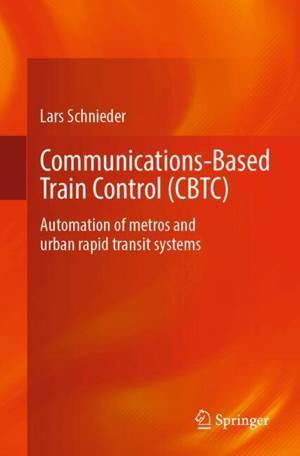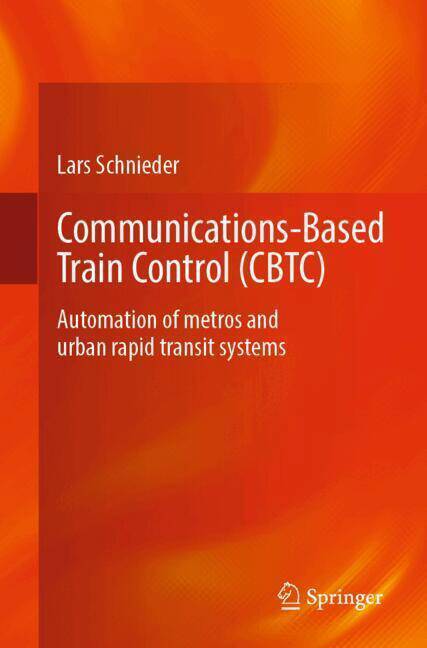
- Retrait gratuit dans votre magasin Club
- 7.000.000 titres dans notre catalogue
- Payer en toute sécurité
- Toujours un magasin près de chez vous
- Retrait gratuit dans votre magasin Club
- 7.000.0000 titres dans notre catalogue
- Payer en toute sécurité
- Toujours un magasin près de chez vous
Communications-Based Train Control (Cbtc)
Automation of Metros and Urban Rapid Transit Systems
Lars SchniederDescription
Urban rail systems are increasingly reaching their limits as traffic demand rises. The safety and performance of these transport systems are significantly determined by the control and safety technology used. Expanding the transport offering requires efficient signaling systems, known as Communications-Based Train Control (CBTC) systems. In this book, the author presents the system environment into which CBTC systems are integrated within urban transport companies. It shows how the individual safety functions of CBTC solutions contribute to hazard control and how technical systems progressively take over more functions from humans with increasing grades of automation. Finally, non-functional requirements for CBTC systems such as safety, availability, performance, and cost-effectiveness are discussed, and factors for the successful execution of complex signaling renewal projects are highlighted.
Spécifications
Parties prenantes
- Auteur(s) :
- Editeur:
Contenu
- Nombre de pages :
- 175
- Langue:
- Anglais
Caractéristiques
- EAN:
- 9783662702505
- Date de parution :
- 06-05-25
- Format:
- Livre broché
- Format numérique:
- Trade paperback (VS)
- Dimensions :
- 155 mm x 235 mm

Les avis
Nous publions uniquement les avis qui respectent les conditions requises. Consultez nos conditions pour les avis.






